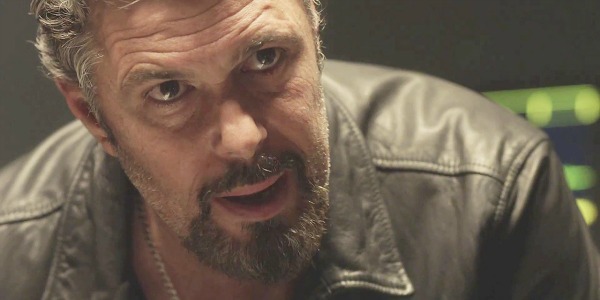The original 24 died a mediocre death, relying heavily on tired cliches and retreads of earlier seasons. The promise of a new “day” in 24: Legacy entices any fan of that ground breaking action series. Unfortunately, fans got a lackluster repeat of past mistakes.
A great new leading man and surprisingly deep storylines regarding gray morality were shoved aside for terrible twists, unnecessary subplots and rushed conclusions. This was a tragic missed opportunity.
A Hero, Sidelined

Corey Hawkins’ Eric Carter was the standout of a pretty solid trio of leading characters. In many ways, he was the only reason to watch Legacy. He was more than just a young version of Kiefer Sutherland’s Jack Bauer. He was capable physically and mentally, thinking on his feet and taking on enemies alone.
But what made Carter stand out was his constant struggle with his true nature. A former Army Ranger, the show played with the possibility that he needed the “rush” in his life. Added to this compelling dilemma was an obsessive need to take out the terrorist threat himself. He was a volatile character and sometimes those are the best ones to watch.
Miranda Otto’s Rebecca Ingram was a mirror of sorts for Carter. She was great as the driven former head of CTU, a woman willing to cross ethical lines in the name of security. It was a great idea to pair her with the idealistic John Donovan (Jimmy Smits), a presidential nominee. While it was not a clash of absolutes, Ingram’s grays contrasted well with John’s more measured approach.
In general, Legacy handled the gray morality in an interesting way. How far was too far in the name of national security? All of these characters also had troubled pasts. In some cases, they had to pay for those troubles. These were some very interesting characters.
However, the show often sidelined these characters to set up worthless storylines that distracted from Legacy’s strengths. Anna Diop was great as Carter’s wife Nicole, but she was involved in an unnecessary love triangle with Carter’s brother Isaac (Ashley Thomas). The troubles between Carter and Nicole were more than enough, but the show felt the need to add more.
This was not the only time. There are other interesting characters, including villain Jadalla Bin-Khalid (Raphael Acloque), CTU analyst Andy Shalowitz (Dan Bucatinsky) and even a returning Tony Almeida (Carlos Bernard), but nearly all of them were sidelined in favor of setting up several red herring subplots. Not only were these subplots distracted, they were also poorly executed.
The World’s Worst Terrorist Cell and Other Tales

There was one subplot that stood out for all the wrong reasons: The Dudayev Terror Cell. Centered around young Amira (Kathryn Prescott), Legacy would often concentrate much of its attention to fleshing out her family’s struggle with going through with a terrorist attack. Well, it would try. Ultimately, the characters in this storyline were often ridiculously inept. Worse yet, the show would often sideline Carter himself to feature this inane plot. There were episodes early in the season where he would barely appear.
Legacy lost valuable time because of this. We could have learned more about Carter or developed Jadalla as a villain. Instead, we found out that this terrorist cell was terrible at killing people. Over and Over.
Some might not agree with this sentiment, but it was troubling that Legacy’s attempt at creating a “sympathetic” terrorist led them to focus on a non-Middle Eastern character. Amira was an Eastern European young woman, a pretty, doe eyed white girl. Granted, the choice was probably made to shock the audience with an innocent girl…but why did they make this choice? A young Middle Eastern woman would have been as effective. Well, if she were better written.

Speaking of poor attempts at shocking the audience, Legacy brought back an old friend: Torture. Or rather, enhanced interrogation. Whatever it was called, it returned to mixed results. The ethical dilemma behind using this technique was handled in a much more measured and mature way. Gone was the almost laughable trope where Jack Bauer would torture or otherwise maim every other character he came across in later seasons of the original.
However, Legacy still failed with this trope. We have seen this trope used so often in 24 that it lost any power to shock us. In all honesty, the show would have been better served to not even use it.
That said, Legacy did over use a different trope. Characters were kidnapped left and right. In a show like this, which relies on espionage and leverage to get people to cooperate, it is hard to avoid this trope, but wow…this show doubled down on it hard. At one point, a character was kidnapped at a laughably coincidental time. At another, characters simply traded places as kidnap victims.
Twists were thrown out, but failed as they were obviously simple shock value. These twists would literally come out of nowhere and they would just as quickly be tossed aside. They also made little in some cases. One twist came so late in the season it had no real effect. Plus, it was a dumb twist that completely dismissed the power of certain characters.
So Much Plot, So Little Time
Part of Legacy’s problem was a truncated season. There were only twelve episodes (Thirteen if prequel The Raid were counted) for the show to tell its story. The shortened time explains the rushed feel of this season. Maybe this meant that the show should have brought their lofty aspirations down a bit.
From the over emphasis on the terrorist cell to the ridiculously careening and rushed conclusion, the show loses its heart: Eric Carter. Whenever the show focused on him, it is compelling television. Unforunately, those moments were few and far between.
SCORE: 5 OUT OF 10
